In this article, we will discuss leukemia nursing care plans and nursing diagnosis that nurses can use to provide effective care for their patients. We will provide a detailed explanation of each plan and diagnosis, as well as tips for implementing effective nursing interventions.
What is Leukemia?
Leukemia is a malignant proliferation of white blood cell precursors in bone marrow or lymph tissue and their accumulation in peripheral blood, bone marrow, and body tissues. The blood’s cellular components originate primarily in the marrow of bones such as the sternum, iliac crest, and cranium. All blood cells begin as immature cells (blasts or stem cells) that differentiate and mature into RBCs, platelets, and various types of WBCs. In leukemia, many immature or ineffective WBCs crowd out the developing normal cells. As the normal cells are replaced by leukemic cells, anemia, neutropenia, and thrombocytopenia occur.
Nursing Care Plans and Management
The nursing management and care plan for patients with leukemia involve several important aspects. Nurses play a crucial role in assessing and monitoring patients, managing symptoms, and providing support throughout the treatment journey.
Nursing Problem Priorities
The following are the nursing priorities for patients with leukemia:
- Minimizing infection through infection control
- Managing side effects of chemotherapy
- Managing pain
- Providing emotional support
- Providing health teachings
Nursing Assessment
Assess for the following subjective and objective data:
- Reports of pain (bone, nerve, headaches, and so forth)
- Guarding/distraction behaviors, facial grimacing, alteration in muscle tone
- Autonomic responses
- Verbal report of fatigue or weakness
- Exertional discomfort or dyspnea
- Abnormal HR or BP response
- Verbalization of problem/request for information
- Statement of misconception
Assess for factors related to the cause of leukemia:
- Inadequate secondary defenses: alterations in mature WBCs (low granulocyte and abnormal lymphocyte count), increased number of immature lymphocytes; immunosuppression, bone marrow suppression (effects of therapy/transplant)
- Inadequate primary defenses (stasis of body fluids, traumatized tissue)
Nursing Diagnosis
Following a thorough assessment, a nursing diagnosis is formulated to specifically address the challenges associated with leukemia based on the nurse’s clinical judgement and understanding of the patient’s unique health condition. While nursing diagnoses serve as a framework for organizing care, their usefulness may vary in different clinical situations. In real-life clinical settings, it is important to note that the use of specific nursing diagnostic labels may not be as prominent or commonly utilized as other components of the care plan. It is ultimately the nurse’s clinical expertise and judgment that shape the care plan to meet the unique needs of each patient, prioritizing their health concerns and priorities.
Nursing Goals
Goals and expected outcomes may include:
- The client will identify actions to prevent/reduce risk of infection.
- The client will demonstrate techniques, and lifestyle changes to promote a safe environment, and achieve timely healing.
Nursing Interventions and Actions
Therapeutic interventions and nursing actions for patients with leukemia may include:
1. Promoting Infection Control and Management
Clients with leukemia are at risk for infection due to the disease’s impact on the bone marrow and immune system. Leukemia disrupts the production of normal blood cells, including white blood cells that play a crucial role in fighting infections, leaving the body vulnerable to bacterial, fungal, and viral infections. Additionally, chemotherapy and other treatments for leukemia can further suppress the immune system, increasing the risk of infection. Infection prevention strategies are essential in reducing the risk of complications and ensuring optimal treatment outcomes.
1. Closely monitor the temperature. Note the correlation between temperature elevations and chemotherapy treatments. Observe for fever associated with tachycardia, hypotension, and subtle mental changes.
Although fever may accompany some forms of chemotherapy, progressive hyperthermia occurs in some types of infections, and fever (unrelated to drugs or blood products) occurs in most leukemia patients. Septicemia may occur without fever.
2. Inspect the skin for tender, erythematous areas; open wounds. Cleanse skin with antibacterial solutions.
This may indicate local infection. Open wounds may not produce pus because of the insufficient number of granulocytes.
3. Inspect oral mucous membranes. Provide good oral hygiene. Use a soft toothbrush, sponge, or swabs for frequent mouth care.
The oral cavity is an excellent medium for the growth of organisms and is susceptible to ulceration and bleeding.
4. Auscultate breath sounds, noting crackles, and rhonchi. Inspect secretions for changes in characteristics: increased sputum production or change in sputum color. Observe urine for signs of infection: cloudy, foul-smelling, or presence of urgency or burning with voids.
Early intervention is essential to prevent sepsis in immuno-suppressed persons.
5. Monitor laboratory studies.
See Laboratory and Diagnostic Procedures
6. Place in a private room. Limit visitors as indicated. Prohibit live plants or flowers. Restrict fresh fruits and make sure they are properly washed or peeled. Coordinate patient care so that leukemic patient doesn’t come in contact with staff who also care for patients with infections or infectious diseases.
To protect the patient from potential sources of pathogens or infection. Bone marrow suppression, neutropenia, and chemotherapy place the patient at high risk for infection.
7. Require good hand washing protocol for all personnel and visitors.
Prevents cross-contamination and reduces the risk of infection.
8. Prevent chilling. Force fluids, and administer a tepid sponge bath.
Helps reduce fever, which contributes to fluid imbalance, discomfort, and CNS complications.
9. Encourage frequent turning and deep breathing.
Prevents stasis of respiratory secretions, reducing the risk of atelectasis or pneumonia.
10. Handle the patient gently. Keep linens dry and wrinkle-free.
Prevents sheet burn and skin excoriation.
11. Avoid using indwelling urinary catheters and giving I.M. injections.
These can provide an avenue for infection.
12. Provide thorough skin care by keeping the patient’s skin and perianal area clean, and apply mild lotion or creams to keep the skin from drying or cracking. Thoroughly clean skin before all invasive skin procedures.
Additional measures to avoid infection.
13. Change IV tubing according to your facility’s policy. Use a strict sterile technique and metal scalp vein needles (metal butterfly needles) when starting an IV. If the patient receives total parenteral nutrition, give scrupulous subclavian catheter care.
It is essential to change both the IV site and tubing for patients with leukemia to minimize the risk of infection and ensure proper medication delivery. The frequent administration of chemotherapy and other treatments through the IV can lead to irritation and inflammation of the vein, increasing the risk of infection. Changing the IV site can help prevent further damage to the vein and minimize the risk of infection. Similarly, changing the IV tubing can help maintain sterility, reduce the risk of contamination, and ensure the proper delivery of medications.
14. Promote good perianal hygiene. Examine the perianal area at least daily during acute illness. Provide sitz baths, using Betadine or Hibiclens if indicated. Avoid rectal temperatures, and use of suppositories.
Promotes cleanliness, reducing the risk of perianal abscess; enhances circulation and healing. A perianal abscess can contribute to septicemia and death in immune-compromised patients.
15. Coordinate procedures and tests to allow for uninterrupted rest periods.
Conserves energy for healing, and cellular regeneration.
16. Encourage increased intake of foods high in protein and fluids with adequate fiber.
Promotes healing and prevents dehydration. Constipation potentiates the retention of toxins and the risk of rectal irritation or tissue injury.
17. Limit invasive procedures (venipuncture and injections) as possible.
A break in the skin could provide an entry for pathogenic or potentially lethal organisms. The use of central venous lines (tunneled catheter or implanted port) can effectively reduce the need for frequent invasive procedures and the risk of infection. Myelo suppression may be cumulative in nature, especially when multiple drug therapy (including steroids) is prescribed.
18. Prepare for and assist with leukemia-specific treatments such as chemotherapy, radiation, and/or bone marrow transplant.
Leukemia is usually treated with a combination of these agents, each requiring specific safety precautions for patients and care providers.
19. Administer medications as indicated.
See Pharmacologic Management
20. Avoid the use of aspirin-containing antipyretics.
Aspirin can cause gastric bleeding and further decrease, platelet count.
21. Provide a nutritious diet, high in protein and calories, avoiding raw fruits, vegetables, or uncooked meats.
Proper nutrition enhances the immune system. Minimizes potential sources of bacterial contamination.
2. Managing Fluid Volume
Clients with leukemia are at risk for deficient fluid volume due to several factors, including excessive losses through vomiting, diarrhea, or bleeding, decreased fluid intake due to poor appetite, and increased fluid needs resulting from fever or chemotherapy. These factors can lead to dehydration, electrolyte imbalances, and other complications, making it essential to monitor and maintain fluid balance in these clients. Maintaining appropriate fluid balance is essential for optimizing organ function, supporting chemotherapy treatments, and minimizing complications such as dehydration or fluid overload.
1. Monitor I&O. Calculate insensible losses and fluid balance. Note decreased urine output in presence of adequate intake. Measure specific gravity and urine pH.
Tumor lysis syndrome occurs when destroyed cancer cells release toxic levels of potassium, phosphorus, and uric acid. Elevated phosphorus and uric acid levels can cause crystal formation in the renal tubules, impairing filtration and leading to renal failure.
2. Weigh daily.
The measure of the adequacy of fluid replacement and kidney function. Continued intake greater than output may indicate renal insult or obstruction.
3. Monitor BP and HR.
Changes may reflect the effects of hypovolemia (bleeding or dehydration).
4. Evaluate skin turgor, capillary refill, and general condition of mucous membranes.
Indirect indicators of fluid status or hydration.
5. Note the presence of nausea, and fever.
Affects intake, fluid needs, and route of replacement.
6. Monitor laboratory studies: platelets, Hb/Hct, clotting.
When the platelet count is less than 20,000/mm (because of proliferation of WBCs and/or bone marrow suppression secondary to antineoplastic drugs), patient is prone to spontaneous life-threatening bleeding. Decreasing Hb/Hct is indicative of bleeding (may be occult).
7. Promote good nutrition.
Explain that chemotherapy may cause weight loss and anorexia so encourage the patient to eat and drink high-calorie, and high-protein foods. Note: Chemotherapy and adjunctive prednisone may cause weight gain, so dietary counseling and teachings are helpful.
8. Encourage fluids of up to 3–4 L/day when oral intake is resumed.
Promotes urine flow, prevents uric acid precipitation, and enhances clearance of antineoplastic drugs.
9. Provide adequate hydration, a high-residue diet, stool softeners, and mild laxatives. Encourage walking.
To prevent constipation.
10. Encourage oral hygiene. Limit oral care to mouthwash if indicated. Avoid mouthwashes with alcohol.
When bleeding is present, even gentle brushing may cause more tissue damage. Alcohol has a drying effect and may be painful to irritated tissues. While oral hygiene prevents dry mouth.
11. Provide a soft diet.
May help reduce gum irritation.
12. Administer IV fluids as indicated.
Maintains fluid and electrolyte balance in the absence of oral intake; prevents or minimizes tumor lysis syndrome, and reduces the risk of renal complications.
13. Administer medications as indicated.
See Pharmacologic Management
14. Administer RBCs, platelets, and clotting factors.
Can restore RBC count and oxygen-carrying capacity to correct anemia. Used to prevent or treat hemorrhage.
15. Maintain external central vascular access device (subclavian or tunneled catheter or implanted port).
Eliminate peripheral venipuncture as a source of bleeding.
3. Managing Acute Pain
Clients with leukemia may experience acute pain due to physical agents such as bone or joint involvement, chemical agents from chemotherapy or radiation therapy, and psychological manifestations such as anxiety or depression. These factors can cause tissue damage, inflammation, and nerve irritation, leading to pain and discomfort, which may require comprehensive pain management strategies to address. Effective pain management is essential to alleviate suffering, enhance quality of life, and promote patient comfort. Nursing interventions play a pivotal role in managing acute pain in these patients.
1. Investigate reports of pain. Note changes in degree (use a scale of 0–10) and site.
Helpful in assessing the need for intervention; may indicate developing complications.
2. Monitor vital signs, and note nonverbal cues, e.g., muscle tension, and restlessness.
May be useful in evaluating verbal comments and the effectiveness of interventions.
3. Monitor uric acid level as appropriate.
Rapid turnover and destruction of leukemic cells during chemotherapy can elevate uric acid, causing swollen painful joints in some patients. Massive infiltration of WBCs into joints can also result in intense pain.
4. Provide a quiet environment and reduce stressful stimuli. Limit or reduce noise, lighting, and constant interruptions.
Promotes rest and enhances coping abilities.
5. Place the client in a position of comfort and support joints, and extremities with pillows or padding.
May decrease associated bone or joint discomfort.
6. Reposition periodically and assist with gentle ROM exercises.
Improves tissue circulation and joint mobility.
7. Provide comfort measures (massage, heat or cool packs) and psychological support, encouragement, or presence.
Minimizes need for or enhances effects of medication.
8. Review the patient’s own comfort measures.
Successful management of pain requires patient involvement. The use of effective techniques provides positive reinforcement, promotes a sense of control, and prepares patients for interventions to be used after discharge.
9. Evaluate and support the patient’s coping mechanisms.
Using own learned perceptions or behaviors to manage pain can help patients cope more effectively.
10. Encourage the use of diversional and relaxation activities such as listening to music, guided imagery, deep breathing exercises, mindfulness meditation, reading, watching TV or movies, engaging in arts and crafts, playing games, or talking with friends and family.
These activities can help distract the client’s attention from their pain and promote relaxation and a sense of well-being, which can reduce the intensity of their pain.
11. Ensure a quiet and peaceful environment.
This can be done through promoting good sleep hygiene and minimizing any environmental factors that may exacerbate pain, such as bright lights or loud noises.
12. Administer medications as indicated.
See Pharmacologic Management
4. Enhancing Tolerance to Activity
Clients with leukemia may experience activity intolerance due to generalized weakness from the disease process, therapeutic restrictions related to treatment protocols, anemia resulting from bone marrow suppression, and reduced energy levels. These factors can limit the client’s ability to perform daily activities, leading to fatigue, shortness of breath, and decreased physical endurance, which can impact their overall quality of life and ability to engage in usual activities. Enhancing tolerance to activity in patients with leukemia is an essential aspect of their care and rehabilitation. Supporting patients in gradually increasing their tolerance to activity can help improve their physical fitness and enhance their quality of life.
1. Evaluate reports of fatigue, noting inability to participate in activities or ADLs.
Effects of leukemia, anemia, and chemotherapy may be cumulative (especially during acute and active treatment phase), necessitating assistance.
2. Monitor and record vital signs and oxygen saturation levels.
These can be affected by reduced physical activity. Vital signs, such as heart rate, blood pressure, and respiratory rate, provide important information about the client’s overall health status, while oxygen saturation levels reflect the amount of oxygen in the blood, which is important for cellular function and energy production.
3. Assess client for signs of dyspnea or chest pain.
Decreased physical activity can lead to deconditioning, which can cause dyspnea, while anemia or infection can lead to chest pain.
4. Encourage patient to keep a diary of daily routines and energy levels, noting activities that increase fatigue.
Helps patient prioritize activities and arrange them around fatigue pattern.
5. Provide quiet environment and uninterrupted rest periods. Encourage rest periods before meals.
Restores energy needed for activity and cellular regeneration and/or tissue healing.
6. Implement energy-saving techniques (sitting, rather than standing, pacing activities, using a shower chair). Assist with ambulation and other activities as indicated.
Maximizes available energy for self-care tasks.
7. Schedule meals around chemotherapy. Give oral hygiene before meals and administer antimetics as indicated.
May enhance intake by reducing nausea.
8. Recommend small, nutritious, high-protein meals and snacks throughout the day.
Smaller meals require less energy for digestion than larger meals. Increased intake provides fuel for energy.
9. Encourage moderate exercises as indicated such as guided stretching exercises, short walks or light aerobic exercise, resistance training with light weights or resistance bands, and low-impact activities such as swimming or yoga.
These activities can help enhance cardiovascular and muscular endurance, promote balance and flexibility, and improve overall functional capacity.
10. Provide supplemental oxygen.
Maximizes oxygen available for cellular uptake, improving tolerance of activity.
5. Initiating Health Teachings and Patient Education
Health teachings and patient education empower individuals to make informed decisions, manage treatment-related symptoms, and adopt healthy lifestyle practices. Healthcare professionals play a vital role in providing education about the specific type of leukemia, treatment options, potential side effects, and self-care strategies. They guide patients in understanding the importance of adhering to medication schedules, recognizing signs of infection or complications, and maintaining a balanced diet. Additionally, patients learn about the importance of regular follow-up appointments, monitoring their blood counts, and practicing self-care measures to support their overall well-being.
1. Review pathology of specific form of leukemia and various treatment options.
Treatments can include various antineoplastic drugs, transfusions, peripheral progenitor (stem) cell transplant or bone marrow transplant.
2. Provide psychological support by establishing a trusting relationship to promote communication. Allow the patient and family to discuss or verbalize their anger and depression. Let the family participate in patient care as much as possible.
Diagnosis of cancer can be devastating to the family. Providing avenues for verbalization can help promote understand and cooperation throughout the course of care.
3. Utilize visual aids (diagrams, illustrations, or videos) and teaching materials when educating the client and the family.
These can enhance understanding and retention of key concepts and strategies related to disease management and self-care.
4. Involve family members or support persons in the education process.
By involving the family members and support persons in the education process, they can gain a better understanding of the disease process, treatment options, and self-care management methods, which can improve their ability to provide effective support and promote optimal health outcomes.
5. Reinforce key concepts and strategies through verbal and written communication.
Reinforcing key concepts and strategies through verbal and written communication, can help clients and families retain the information more effectively.
6. Provide referrals to appropriate support groups or community resources.
To provide additional education and connect the client with relevant services and resources that can help improve their understanding of the disease, treatment options, and self-care strategies.
6. Assessing and Monitoring for Potential Complications
Leukemia can develop complications through various mechanisms related to the disease itself and its treatment. Through vigilant assessment and monitoring, nurses play a critical role in identifying signs of infection, bleeding, organ dysfunction, and other potential complications. Regular monitoring of vital signs, laboratory values, and physical assessments allows for the timely detection of abnormalities or changes in the patient’s condition. Nurses also assess and monitor for specific complications related to leukemia, such as tumor lysis syndrome, febrile neutropenia, or sepsis. By promptly recognizing and reporting these potential complications, nurses enable the healthcare team to initiate appropriate interventions, such as administering antibiotics, managing pain, providing transfusions, or adjusting treatment regimens. Additionally, nurses play a vital role in educating patients and their families about signs and symptoms to watch for and empowering them to seek timely medical attention.
1. Assess vital signs regularly.
Regularly monitoring vital signs, including temperature, heart rate, respiratory rate, and blood pressure, helps identify early signs of infection or sepsis. Changes in vital signs can indicate systemic complications or the need for immediate medical intervention.
2. Monitor complete blood count (CBC).
Monitoring CBC results, including white blood cell count, hemoglobin levels, and platelet count, allows for the early detection of abnormal cell counts, anemia, or thrombocytopenia. This helps identify the risk of infection, bleeding, or anemia-related complications.
3. Assess for signs of Infection.
Carefully assessing patients for signs and symptoms of infection, such as fever, chills, increased heart rate, or changes in mental status, enables early detection and prompt initiation of appropriate antimicrobial therapy to prevent severe infections.
4. Assess skin integrity.
Regularly assessing the skin for signs of breakdown or infection is crucial, as leukemia patients are at a higher risk of skin infections and delayed wound healing due to compromised immune function. Early identification of skin issues allows for timely intervention and prevention of further complications.
5. Assess neurologic status.
Performing regular neurological assessments, including mental status, orientation, motor function, and sensory responses, helps detect any neurological complications that may arise from leukemia or its treatments. Timely recognition of neurological changes allows for appropriate interventions and prevents further deterioration.
6. Assess pain using appropriate measures.
Conducting thorough pain assessments using appropriate pain scales ensures effective pain management. Regularly assessing and documenting pain levels helps determine the need for pain medication adjustments and aids in the identification of underlying causes or complications.
7. Monitor fluid balance.
Monitoring intake and output, assessing for signs of dehydration or fluid overload, and evaluating laboratory values (such as electrolytes and urine specific gravity) assist in maintaining adequate fluid balance. Proper fluid management helps prevent complications related to dehydration or fluid overload, such as renal dysfunction or electrolyte imbalances.
8. Assess patient’s psychosocial well-being.
Assessing patients’ psychosocial well-being and providing emotional support is essential in managing the emotional and psychological impact of leukemia and its potential complications. Regular assessment allows for the identification of emotional distress, anxiety, or depression, enabling timely intervention and appropriate support.
7. Administering Medications and Pharmacologic Support
Administering medications and providing pharmacologic support are essential components of the comprehensive care provided to patients with leukemia. Nurses play a crucial role in administering medications, monitoring their effectiveness and side effects, and providing education and support to patients and their families. This involves understanding the specific medications used in leukemia treatment, their mechanisms of action, dosage regimens, and potential interactions. It also involves closely monitoring patients for adverse reactions or complications related to medication administration.
1. Chemotherapy Agents
Chemotherapy drugs, such as methotrexate, cytarabine, vincristine, and daunorubicin, are commonly used to kill leukemia cells or inhibit their growth. These medications are administered in specific combinations and schedules, depending on the type and stage of leukemia.
2. Targeted therapy drugs
Targeted therapy drugs, such as imatinib, dasatinib, and nilotinib, are used in specific types of leukemia (e.g., chronic myeloid leukemia) to inhibit the activity of specific proteins or genes responsible for the growth and survival of leukemia cells.
3. Immunotherapy drugs
Immunotherapy drugs such as monoclonal antibodies (rituximab, alemtuzumab) or immune checkpoint inhibitors (pembrolizumab, nivolumab), stimulate the body’s immune system to recognize and destroy leukemia cells.
4. Hematopoietic Stem Cell Transplant (HSCT) Medications
Medications used in preparation for and during hematopoietic stem cell transplantation include high-dose chemotherapy (conditioning regimen) and immunosuppressive drugs (e.g., cyclosporine, methotrexate) to prevent graft-versus-host disease (GVHD) and promote engraftment of transplanted cells.
5. Antifungal and antibacterial agents
Antifungal medications (fluconazole, voriconazole) and antibacterial agents (cefepime, meropenem) may be prescribed prophylactically or therapeutically to prevent or treat infections, as patients with leukemia are more susceptible to infections due to compromised immune function.
6. Colony-stimulating factors: sargramostim (Leukine)
Restores WBCs destroyed by chemotherapy and reduces the risk of severe infection and death in certain types of leukemia.
7. Antiemetics: 5-HT3 receptor antagonist drugs such as ondansetron (Zofran) or granisetron (Kytril)
Relieves nausea and/or vomiting associated with the administration of chemotherapy agents.
8. Allopurinol (Zyloprim)
Improves renal excretion of toxic byproducts from the breakdown of leukemia cells. Reduces the chances of nephropathy as a result of uric acid production.
9. Potassium acetate or citrate, sodium bicarbonate
May be used to alkalinize the urine, preventing or minimizing tumor lysis syndrome or kidney stones.
10. Stool softeners
Helpful in reducing straining at stool with trauma to rectal tissues.
11. Oral contraceptives
Minimizes blood loss by stopping or slowing the menstrual flow.
12. Analgesics: acetaminophen (Tylenol)
Given for mild pain not relieved by comfort measures. Avoid aspirin-containing products because they may potentiate hemorrhage.
13. Opioids: codeine, morphine, hydromorphone (Dilaudid)
Used around-the-clock, rather than PRN, when pain is severe. The use of patient-controlled analgesia (PCA) is beneficial in preventing peaks and valleys associated with intermittent drug administration and increases the patient’s sense of control.
14. Antianxiety agents: diazepam (Valium), lorazepam (Ativan)
May be given to enhance the action of analgesics or opioids.
8. Monitoring Laboratory and Diagnostic Procedures
Monitoring laboratory and diagnostic procedures is essential in the care of patients with leukemia. Regular monitoring of laboratory parameters and diagnostic procedures provides valuable information for treatment planning and management. By closely monitoring laboratory parameters and conducting diagnostic procedures, nurses can gain valuable insights into the patient’s disease status, treatment response, and potential complications. This information guides treatment decisions, enables timely intervention when needed, and helps optimize patient outcomes in the management of leukemia.
1. CBC, noting whether WBC count falls or sudden changes occur in neutrophils.
Decreased numbers of normal or mature WBCs can result from the disease process or chemotherapy, compromising the immune response and increasing the risk of infection.
2. Peripheral blood smear
A microscopic examination of a blood sample to evaluate the appearance, shape, and size of blood cells. It helps identify abnormal cell morphology and determine the presence of leukemia cells.
3. Bone Marrow Aspiration and Biopsy
A procedure to collect a sample of bone marrow for examination under a microscope. It helps determine the type of leukemia, assess the percentage of leukemic cells, and evaluate the response to treatment.
4. Gram stain cultures and sensitivity.
Verifies presence of infections; identifies specific organisms and appropriate therapy.
5. Flow cytometry
A technique that uses fluorescent-labeled antibodies to analyze the surface markers of cells. It helps identify and characterize specific cell populations, including leukemia cells, and aids in disease classification.
6. Cytogenetic analysis
Evaluation of the chromosomes in leukemia cells to identify chromosomal abnormalities or genetic mutations that can assist in diagnosis, prognosis, and treatment planning.
7. Molecular testing
Genetic tests, such as polymerase chain reaction (PCR) or fluorescence in situ hybridization (FISH), detect specific genetic alterations or mutations associated with certain types of leukemia. It helps guide treatment decisions and monitor minimal residual disease.
8. Imaging studies
X-rays, computed tomography (CT) scans, magnetic resonance imaging (MRI), or positron emission tomography (PET) scans may be performed to assess the extent of disease involvement, detect lymph node enlargement, evaluate organ or tissue complications, and monitor treatment response.
9. Lumbar puncture (Spinal tap)
A procedure to collect cerebrospinal fluid from the spinal canal for analysis. It helps determine the presence of leukemia cells or detect central nervous system involvement.
10. Blood chemistry panels
Evaluating various metabolic parameters, including electrolyte levels, liver function tests, kidney function tests, and coagulation profile, to assess organ function and monitor treatment-related toxicities.
Recommended Resources
Recommended nursing diagnosis and nursing care plan books and resources.
Disclosure: Included below are affiliate links from Amazon at no additional cost from you. We may earn a small commission from your purchase. For more information, check out our privacy policy.
Ackley and Ladwig’s Nursing Diagnosis Handbook: An Evidence-Based Guide to Planning Care
We love this book because of its evidence-based approach to nursing interventions. This care plan handbook uses an easy, three-step system to guide you through client assessment, nursing diagnosis, and care planning. Includes step-by-step instructions showing how to implement care and evaluate outcomes, and help you build skills in diagnostic reasoning and critical thinking.

Nursing Care Plans – Nursing Diagnosis & Intervention (10th Edition)
Includes over two hundred care plans that reflect the most recent evidence-based guidelines. New to this edition are ICNP diagnoses, care plans on LGBTQ health issues, and on electrolytes and acid-base balance.

Nurse’s Pocket Guide: Diagnoses, Prioritized Interventions, and Rationales
Quick-reference tool includes all you need to identify the correct diagnoses for efficient patient care planning. The sixteenth edition includes the most recent nursing diagnoses and interventions and an alphabetized listing of nursing diagnoses covering more than 400 disorders.

Nursing Diagnosis Manual: Planning, Individualizing, and Documenting Client Care
Identify interventions to plan, individualize, and document care for more than 800 diseases and disorders. Only in the Nursing Diagnosis Manual will you find for each diagnosis subjectively and objectively – sample clinical applications, prioritized action/interventions with rationales – a documentation section, and much more!

All-in-One Nursing Care Planning Resource – E-Book: Medical-Surgical, Pediatric, Maternity, and Psychiatric-Mental Health
Includes over 100 care plans for medical-surgical, maternity/OB, pediatrics, and psychiatric and mental health. Interprofessional “patient problems” focus familiarizes you with how to speak to patients.

See also
Other recommended site resources for this nursing care plan:
- Nursing Care Plans (NCP): Ultimate Guide and Database MUST READ!
Over 150+ nursing care plans for different diseases and conditions. Includes our easy-to-follow guide on how to create nursing care plans from scratch. - Nursing Diagnosis Guide and List: All You Need to Know to Master Diagnosing
Our comprehensive guide on how to create and write diagnostic labels. Includes detailed nursing care plan guides for common nursing diagnostic labels.
Other care plans for hematologic and lymphatic system disorders:
























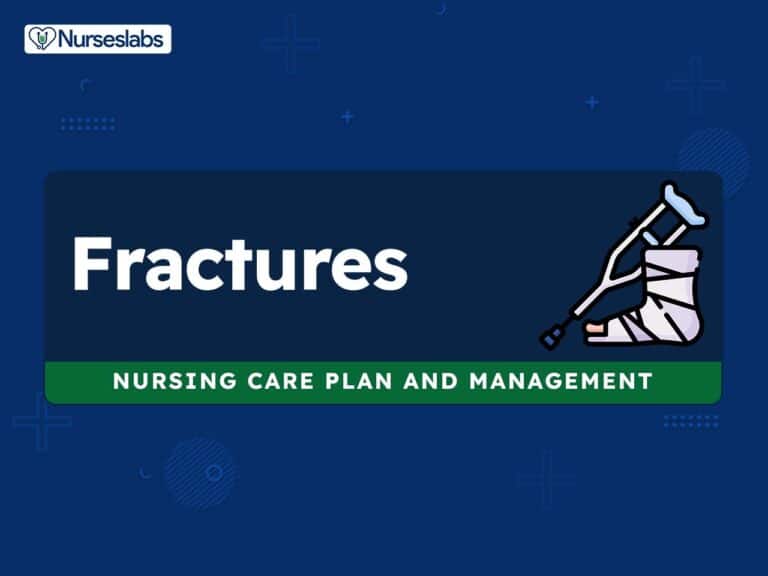

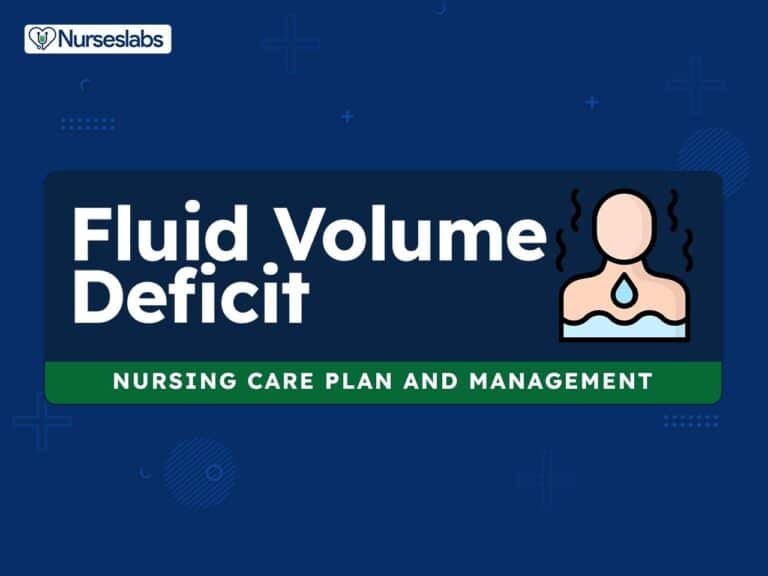

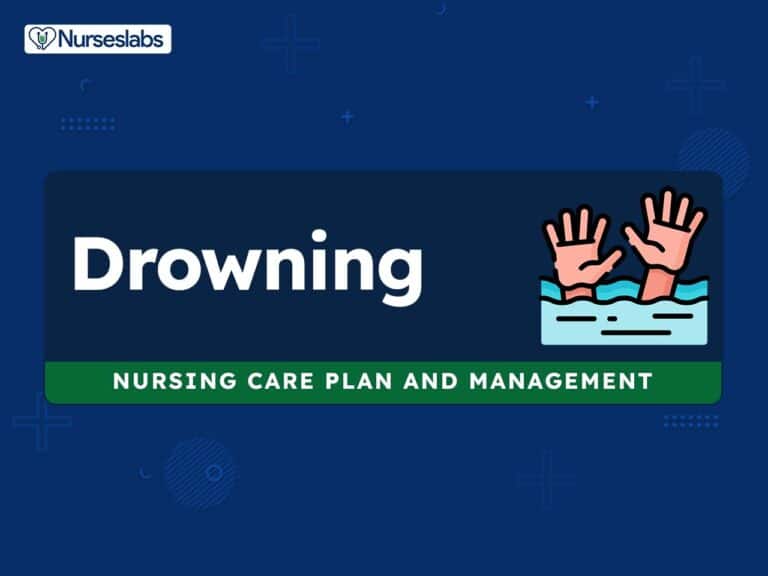

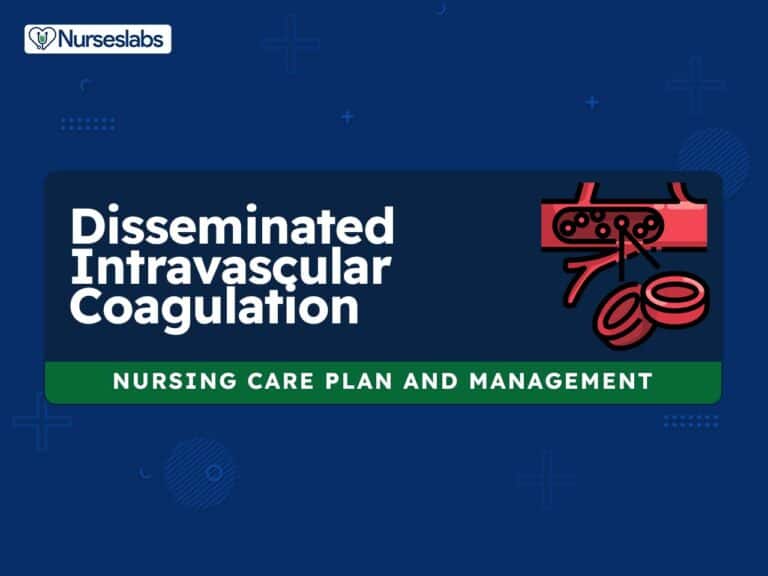

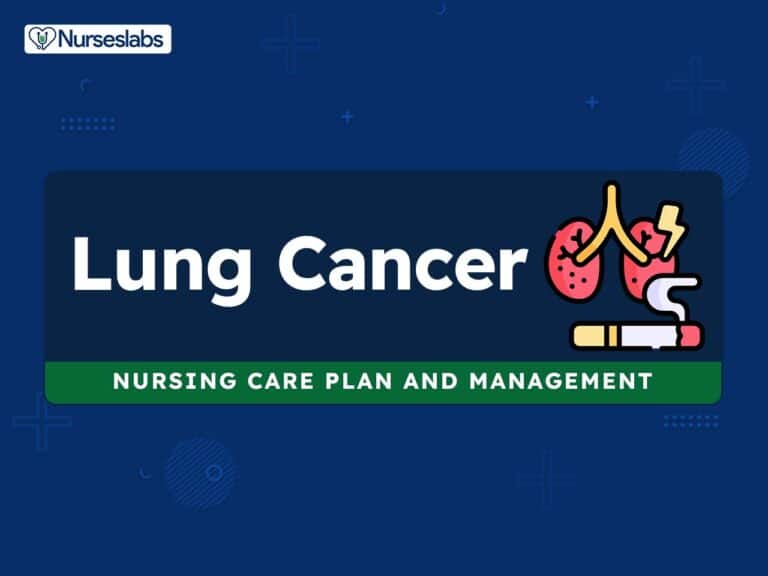

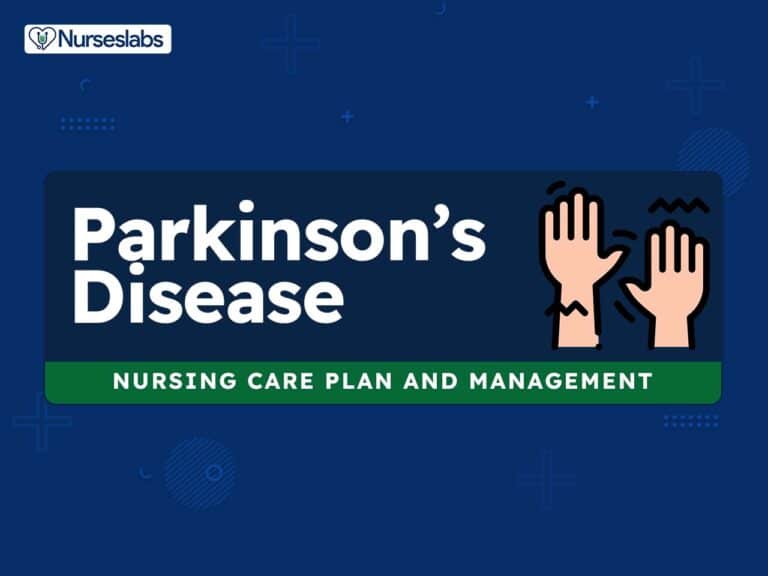

Leave a Comment